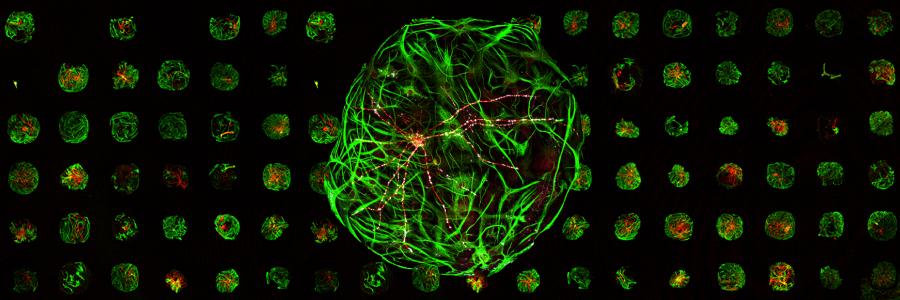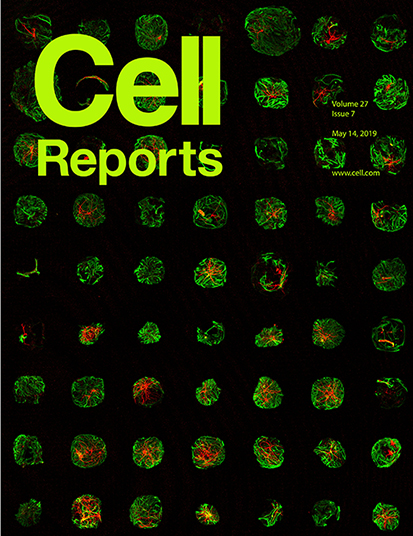
Dr. Marieke Meijer and a team of FGA/CNCR researchers, together with iPSC-experts from the University of Bonn, published a novel method to study synapse formation and function in individual iPSC-derived human neurons in Cell Reports.

Synapse dysfunction is associated with many brain disorders, but robust human neuron models to study synapse function in vitro are lacking. Instead, current models typically rely on spontaneous synaptic events in mass cultures that are not suitable to study evoked synaptic transmission and plasticity. In this multisite study by Meijer et al., the authors adapt a reduced model system (autaptic cultures) to the unique requirements of iPSC-derived human neurons. These neurons are cultured individually on glia microdot arrays and exhibit robust evoked synaptic transmission and plasticity features such as synaptic facilitation, depression and synaptic recovery.
Using this method, the authors were able to provide a quantitative assessment of relevant parameters of synapse development and function in iPSC-derived neurons at single-cell resolution. The authors validated their approach for GABA and glutamatergic human neurons, and developed a pipeline that generated large batches of cryopreserved neurons suitable for multi-site studies. Furthermore, the methodology can be leveraged for drug development and disease modeling, which will provide a strong asset in future collaborations with industry.
This standardized single-neuron model allows us to study synaptic transmission in iPSC-derived human neurons, also on a patient-own genomic background, which will facilitate the study of synaptic dysfunction in brain diseases. “Genes we study out of fundamental interest are being identified as disease-causing in neurodevelopmental disorders. These are genes we understand very well, and are ideal to strengthen our link with the clinic and to provide in-depth mechanistic understanding of these disorders” says Marieke Meijer.
This work was in close collaboration with researchers at the Max Planck institute for Neuroscience in Gottingen, and resulted in a back-to-back publication in the open-access scientific journal Cell Reports. For the original article, see Meijer et al., A Single-Cell Model for Synaptic Transmission and Plasticity in Human iPSC-Derived Neurons, Cell Reports
The research leading to these results was funded in part by COSYN (Comorbidity and Synapse Biology in Clinically Overlapping Psychiatric Disorders; Horizon 2020 Program of the European Union under RIA grant agreement n° 667301).
